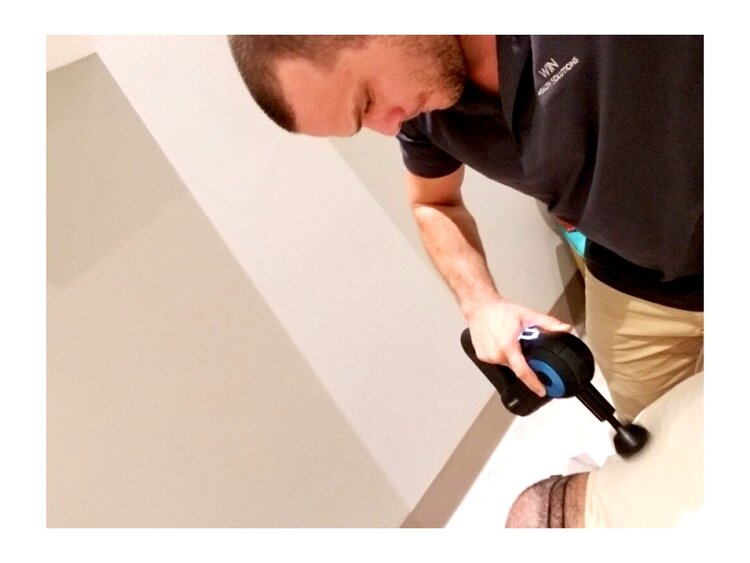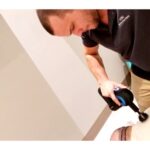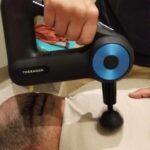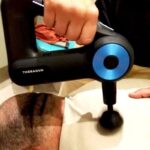Massage Guns: Do they work?
By WIN Contributor: Dr. Nicholas Slowinski
In a world driven by social media, I’m sure we have all seen plenty of advertisements for the latest gizmos and gadgets of all sorts. Have you ever noticed those strange “power tool like” massage guns on social media, perhaps used by famous athletes, or other social media influencers and wondered to yourself, hey I wonder if that would work for me?
Or perhaps more importantly, have you ever wondered how they work?
Well the answer of course can be found in the science behind the device, and to quote a rather famous 20th century scientist… “SCIENCE RULES”…
Now without going too far down this “scientific rabbit hole”, we need to simplify things. Understand that any information our brain is receiving about things such as pain, vibration, or cold and pressure are all getting to the brain on the same highway. The fascinating part is our brain is always receiving such information, however, only really pays attention to the strongest stimulus.
That is to say, if you thought of pain, pressure/cold, and vibration all as individual phone lines, if one is answered or “attenuated” the others would get a busy signal, and our brain would not necessarily recognize them the same way, or at all as long as that “busy signal” is present.
This concept is often termed the “gate–control” theory of pain. It is the same reasoning for using ice on an acute injury, how TENS machines work, or why you may not feel the needles during your acupuncture treatment.
The human body is covered in these tiny little sensors, called mechanoreceptors, and they exist in different capacities throughout the various tissues of the body. These mechanoreceptors are what are responsible for transmitting various sensations to the appropriate “phone line”, and eventually to the brain.
There are two mechanoreceptors that are particularly involved with how these massage guns work. They are known as Meissner corpuscles and the deeper Pacinian corpuscles. These tiny sensors can detect vibration within a certain frequency, of which these “massage guns” are designed to deliver a stimulus within. Thus, when these sensors pick up the busy signal from the sensation of vibration over an area of injury, our brain cannot feel the pain signal coming from our injury.
With all this in mind, it is always best to discuss whether or not treatment interventions such as focal/local vibration therapy is best for your specific injury with your WIN Health Provider. As with any intervention, there may be some contraindications to this form of treatment. The “massage gun” is just one of the intervention strategies used by the health care providers at WIN, and our providers have an ever developing tool belt to make sure we remain on the cutting edge of treatment in order to provide you with the best care possible.





